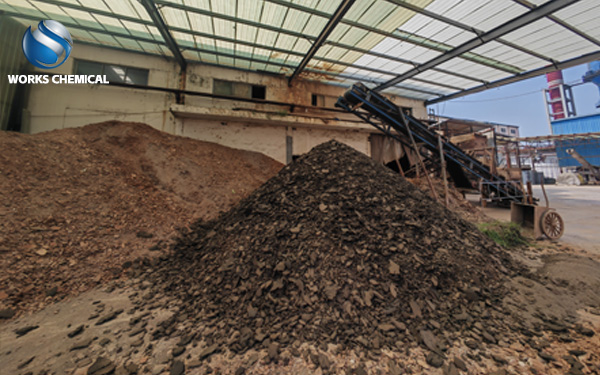
With the lack of mineral resources, the ore grade of the mine is poor and the grinding particle size is fine, which makes it more and more difficult to concentrate and dehydrate the tailings. The traditional treatment method has been unable to effectively deal with tailings. At present, most mines add flocculants such as polyaluminum chloride polyacrylamide when using filter press to deal with tailings to improve the efficiency of tailings concentration.

Due to the fine particle size of the tailings, the tailing pulp generally exists in the form of suspension or colloidal solution. The particles in the tailing pulp are in a stable state due to the homogenous charge carried by the fine particles in the solution and its dissolution in the solution, so it is difficult to precipitate. The finer the ore particles in the slurry, the more stable the slurry solution formed, and the slower the sedimentation rate. The stability of slurry dispersion system can be destroyed by adding flocculant in the solid liquid separation operation of mine filter press, so as to improve the settling speed of slurry particles and improve the efficiency of concentration and dehydration. According to Stokes formula, the sedimentation rate of solid particles is proportional to the diameter of particles, and how to increase the particle size of ore particles is an effective way to solve the problem of pulp concentration and dehydration.
Flocculants can be divided into inorganic flocculants (polyaluminum chloride) and organic flocculants, they are different according to the size of their own molecular weight effect is different. The mechanism of inorganic flocculant is coagulation, by adding inorganic electrolyte to neutralize the electricity of the pulp, the particles in the pulp can contact each other and condense together, thus increasing the particle size. Organic flocculant is an organic polymer, its molecular weight is generally relatively large, by some molecular weight can adsorb particles of effective functional groups, its mechanism of action is mainly flocculation. Flocculation relies on the effective functional groups of these long carbon chains to adsorb fine particles together to form flocs. The more particles adsorbed, the larger the flocs formed and the faster the sedimentation rate. Generally, the effect of organic polymer flocculants is better than that of inorganic flocculants, because it makes the ability of particles to adsorb together stronger, and the flocculants formed are larger.